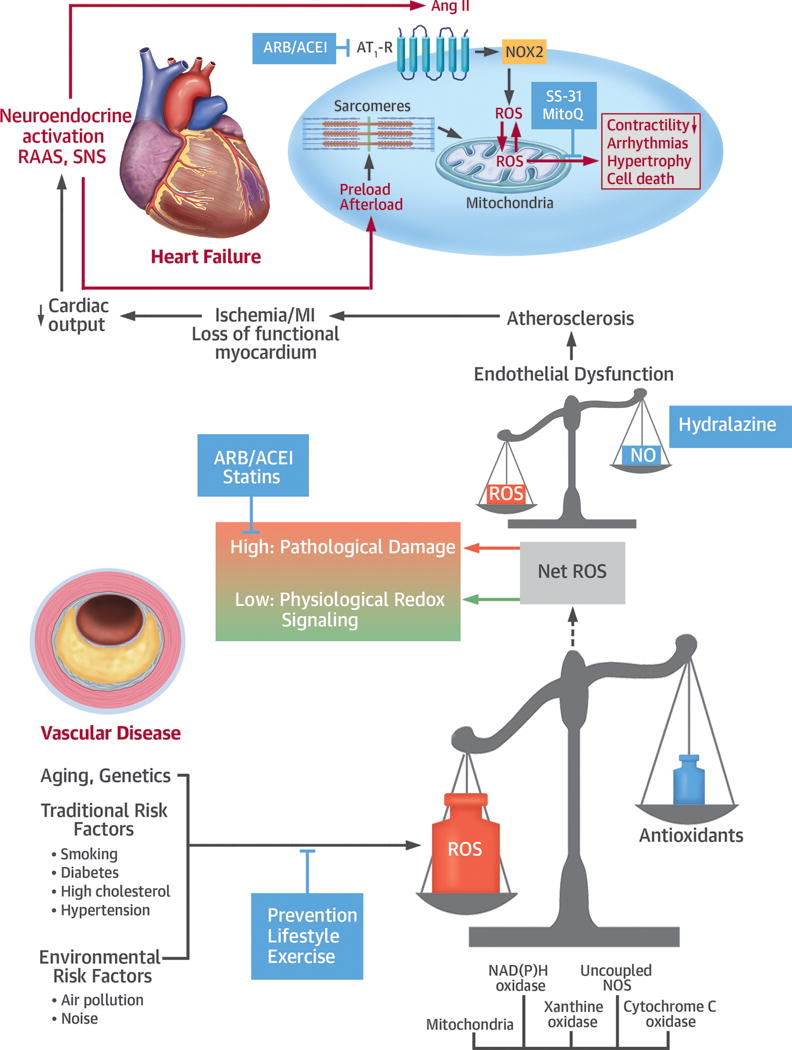Central Illustration. Mechanisms, Sources, and Implications of Oxidative Stress in Cardiovascular Disease and Heart Failure.

Aging, genetic predisposition, traditional risk factors, and environmental factors can induce oxidative stress, particularly in vessels, where nicotinamide adenine dinucleotide phosphate (NADPH) oxidase (NOX) and uncoupled nitric oxide synthase (NOS) are dominant sources. At physiological levels, a low increase in net reactive oxygen species (ROS) can induce protective effects through redox signaling mediating, for example, improved antioxidative capacity. If the generation of ROS outweighs antioxidative capacity, then at higher ROS levels cell damage and endothelial dysfunction arise, which contribute to the development of atherosclerosis. Through ischemia in the context of myocardial infarction (MI), this can induce the loss of functional myocardium and, eventually, heart failure. Although heart failure also arises via other mechanisms, including diabetes and primary cardiomyopathic processes, ultimately neuroendocrine activation via the renin-angiotensin-aldosterone system (RAAS) and angiotensin II receptor type 1 (AT1-R), and the sympathetic nervous system (SNS), combined with increased pre- and after-load, impose additional oxidative stress on the heart. Specific mechanisms leading to increased cardiac oxidative stress then include receptor-induced activation of NOX2 and mitochondrial redox mismatch. As a consequence, oxidation of mitochondrial NADPH gives rise to hydrogen peroxide (H2O2), which plays a causal role in contractile dysfunction, arrhythmia, and ultimately maladaptive cardiac remodeling through hypertrophy and cell death. Potential points of intervention are through lifestyle change, exercise, and medication to reduce risk factors and environmental stressors. Medical options include hydralazine to improve endothelial function, angiotensin-converting enzyme inhibitors (ACEI)/angiotensin receptor blockers (ARBs), and statins. More recently, drugs directly targeted to mitochondria have been developed, such as SS-31 or MitoQ, whose clinical efficacy is currently under evaluation. Ang II = angiotensin II; NO = nitric oxide.
